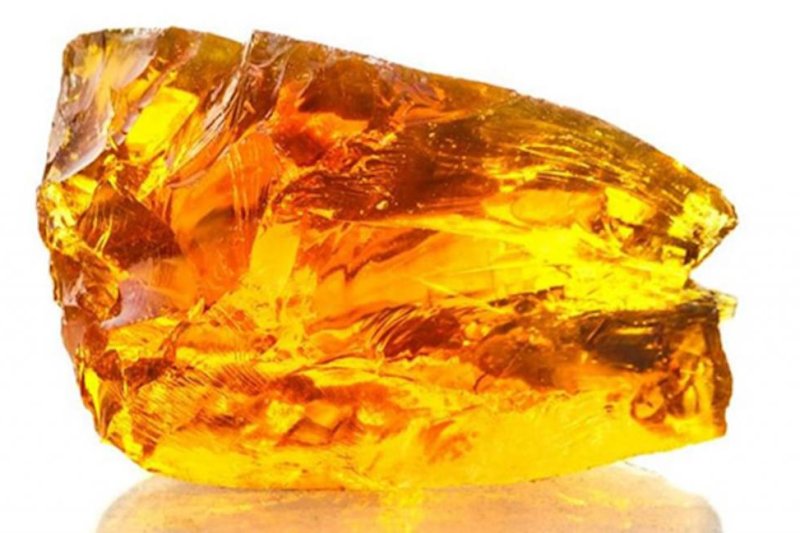A sample of fossilized resin. Australia's amber resources are limited, but scientists hope new analysis techniques will render insights into the nature of the continent's prehistoric ecosystems. Photo by Monash University
Dec. 11 (UPI) -- With the help of nuclear technology, scientists in Australia have begun to unlock the secrets of prehistoric fossilized tree resin -- time capsules made of amber.
Researchers at Monash University used magnetic resonance to analyze several amber fossils, dated between 52 and 40 million years old. The golden-hued nuggets can offer insights into the continent's prehistoric ecosystems.
Amber, or fossilized resin, is the sap of seed plants, hardened over millions of years.
"Our collaboration aimed to identify the original plant sources of amber at Anglesea and Strahan and to establish the way they degraded during their tens of millions of years underground," Jeffrey Stilwell, an associate professor at Monash, said in a news release.
By analyzing the way electromagnetic radiation is absorbed and re-emitted by the amber samples, scientists can pick out signatures of distinct botanical sources.
Paleontologists typically use reflective and infrared spectroscopy to study amber fossils.
"Nuclear magnetic resonance turned out to be extremely useful as it provided us with a unique fingerprint of the chemical structure of each piece of amber," Stilwell said.
Often, scientists prize amber for the animal specimens trapped within, but Monash researchers are interested in the clues that reveal what kinds of plants produced the ancient sap itself. The information can help researchers better understand the kind of plant communities that supported animals during the Eocene Epoch, 56 to 33.9 million years ago.
"Amber can be separated into different classes based on which plants it came from, and the discovery of Class II amber from the Anglesea site could mean certain prehistoric plants capable of producing cadinene-based amber were native to Australia during the Eocene Epoch, which is something that has never been proven due to their absence from the fossil record," Stilwell said.
The new research has been accepted for publication in the journal Organic Geochemistry.
Scientists say their findings will help paleontologists better understand the ways amber degrades over time, which will improve their ability to analyze Australia's resin artifacts.















